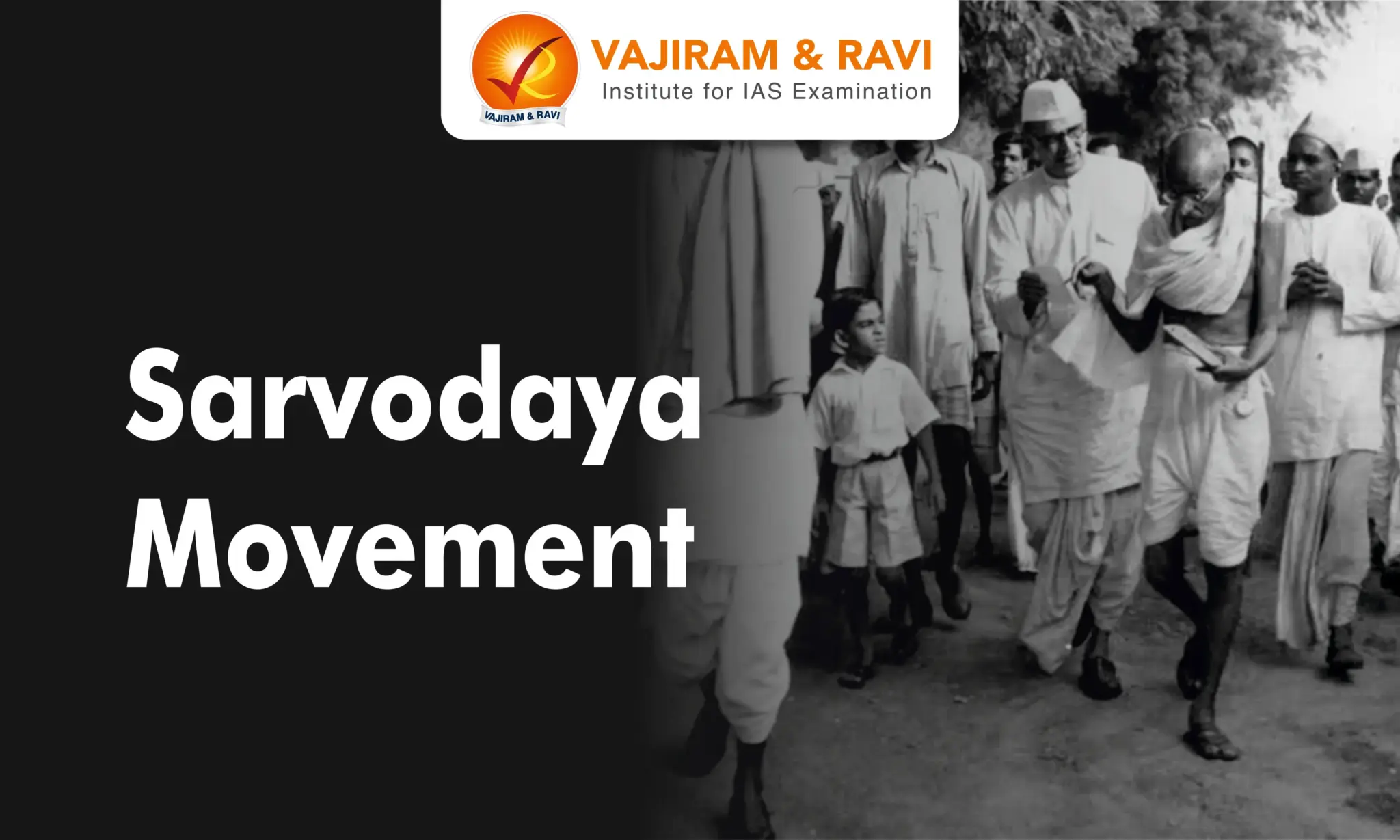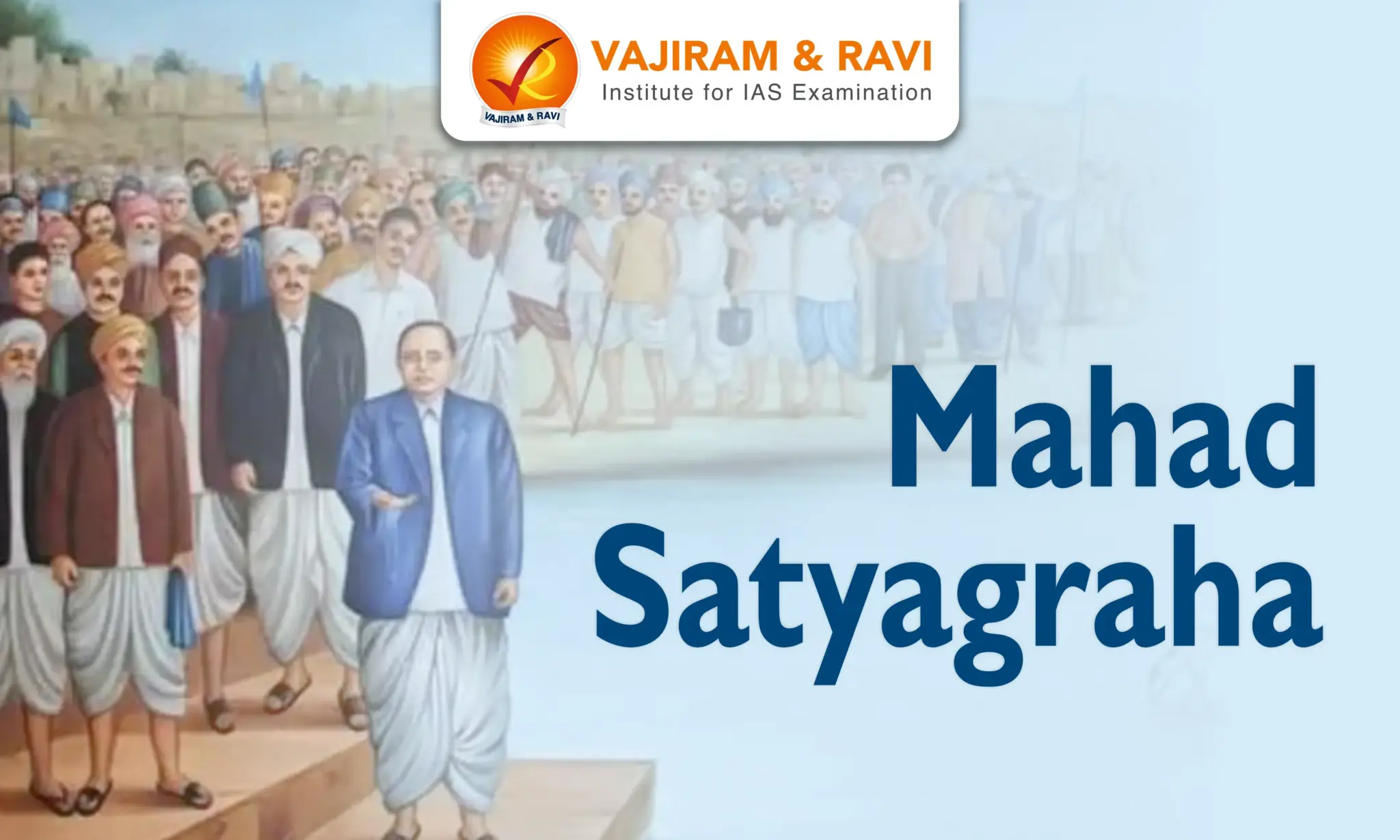The Sarvodaya Movement, founded by Mahatma Gandhi in 1948, draws inspiration from his profound engagement with John Ruskin's Unto This Last. The term "Sarvodaya," meaning "upliftment of all," reflects Gandhi's belief that individual well-being is intricately connected to the well-being of society as a whole. Through the principles of dignity in labour, equitable resource distribution, and community self-reliance, Gandhi envisioned a transformative approach to social justice.
Sarvodaya, at its core advocates for a decentralized socio-economic order that empowers marginalized groups and ensures that the benefits of progress reach the poorest members of society. This philosophy, emphasizing truth and non-violence, has significantly influenced subsequent movements, such as Acharya Vinoba Bhave's Bhoodan Movement, which sought land reform and equity.
Sarvodaya Movement
In 1904, while practising law in South Africa, Gandhi received a copy of John Ruskin's Unto This Last from his British friend. He was so captivated by Ruskin's ideas that he couldn't sleep and resolved to change his life based on the book's ideals.
- Gandhi identified three key tenets: the well-being of the individual is tied to the well-being of all, all occupations hold equal value, and a life of labour—such as farming and craftsmanship—is the most fulfilling.
- Four years later, he translated the book into Gujarati, naming it Sarvodaya, which means "uplift of all."
While inspired by Ruskin, Gandhi shaped Sarvodaya into his unique political ideal, emphasizing dignity in labour, equitable wealth distribution, and community self-sufficiency.
Sarvodaya Meaning
Sarvodaya is a Sanskrit term combining sarva (meaning all) and udaya (meaning rise, uplift, or prosperity). It translates to "the welfare of all" or "upliftment of all." Gandhi envisioned Sarvodaya as the total well-being of every individual, encompassing religious, moral, political, social, and economic dimensions for holistic personal and societal growth.
- Unlike the principle of the greatest good for the greatest number, Sarvodaya aims at universal uplift, advocating for the well-being of all people and living beings.
- It represents a society grounded in spiritual and moral values, directed toward the integral welfare of humanity and the world.
Sarvodaya Movement Principles
The Sarvodaya Movement's core aim is to achieve the welfare of all living beings by transforming society into a just, non-violent, and harmonious order. Gandhi envisioned a decentralized socio-political and economic structure that is moral, non-exploitative, egalitarian, and inclusive. This new system, focused on the integrated welfare of all individuals, should extend the benefits of national progress to the most disadvantaged sections of society. The main principles of Sarvodaya include:
- Trusteeship: Gandhi’s concept of trusteeship advocates for eliminating all forms of exploitation. A classless society would emerge where no privileges exist based on birth, wealth, or talent.
- Trusteeship is also about applying non-violence to transform exploitative societies into more just and inclusive ones.
- Economic Equality: Sarvodaya seeks to abolish the divide between capital and labour, ensuring that the poorest sections participate in societal development. By uplifting the economically disadvantaged, a truly egalitarian society can be achieved.
- Importantly, this transformation must be self-sustaining, with the poor managing their progress.
- Decentralization (Ramarajya): Sarvodaya advocates for decentralization of power, opposing its concentration in any form. Gandhi believed that real democracy starts at the village level, where people manage their affairs.
- Truth and Non-Violence: The ultimate goal of Sarvodaya is the self-realization of every individual, which Gandhi defines as the path to God-realization. This inner transformation can be achieved through the principles of truth and non-violence.
Sarvodaya Movement Significance
The Sarvodaya Movement holds immense significance as it promotes the holistic welfare of all individuals, advocating for social justice, equality, and non-violence. Its ideals inspired many, including Acharya Vinoba Bhave, and Jayaprakash Narayan, who further advanced the principles of Sarvodaya through the Bhoodan Movement, and the Sarvodaya Plan respectively. This movement emphasized the importance of collective well-being and self-sufficiency, fostering a spirit of communal harmony.
- The legacy of Sarvodaya continues to resonate today, guiding various social movements and initiatives focused on sustainable development, equitable resource distribution, and the empowerment of marginalized communities, thereby contributing to a more just society.
Last updated on December, 2025
→ Check out the latest UPSC Syllabus 2026 here.
→ Join Vajiram & Ravi’s Interview Guidance Programme for expert help to crack your final UPSC stage.
→ UPSC Mains Result 2025 is now out.
→ UPSC Notification 2026 is scheduled to be released on January 14, 2026.
→ UPSC Calendar 2026 is released on 15th May, 2025.
→ The UPSC Vacancy 2025 were released 1129, out of which 979 were for UPSC CSE and remaining 150 are for UPSC IFoS.
→ UPSC Prelims 2026 will be conducted on 24th May, 2026 & UPSC Mains 2026 will be conducted on 21st August 2026.
→ The UPSC Selection Process is of 3 stages-Prelims, Mains and Interview.
→ UPSC Result 2024 is released with latest UPSC Marksheet 2024. Check Now!
→ UPSC Prelims Result 2025 is out now for the CSE held on 25 May 2025.
→ UPSC Toppers List 2024 is released now. Shakti Dubey is UPSC AIR 1 2024 Topper.
→ UPSC Prelims Question Paper 2025 and Unofficial Prelims Answer Key 2025 are available now.
→ UPSC Mains Question Paper 2025 is out for Essay, GS 1, 2, 3 & GS 4.
→ UPSC Mains Indian Language Question Paper 2025 is now out.
→ UPSC Mains Optional Question Paper 2025 is now out.
→ Also check Best IAS Coaching in Delhi
Sarvodaya Movement FAQs
Q1. Who started the Sarvodaya Movement?+
Q2. What is the main concept of Sarvodaya?+
Q3. Who are the leaders of the Sarvodaya Movement?+
Q4. Who is the father of the Sarvodaya plan?+
Q5. What is the aim of Sarvodaya?+
Tags: quest sarvodaya movement

















